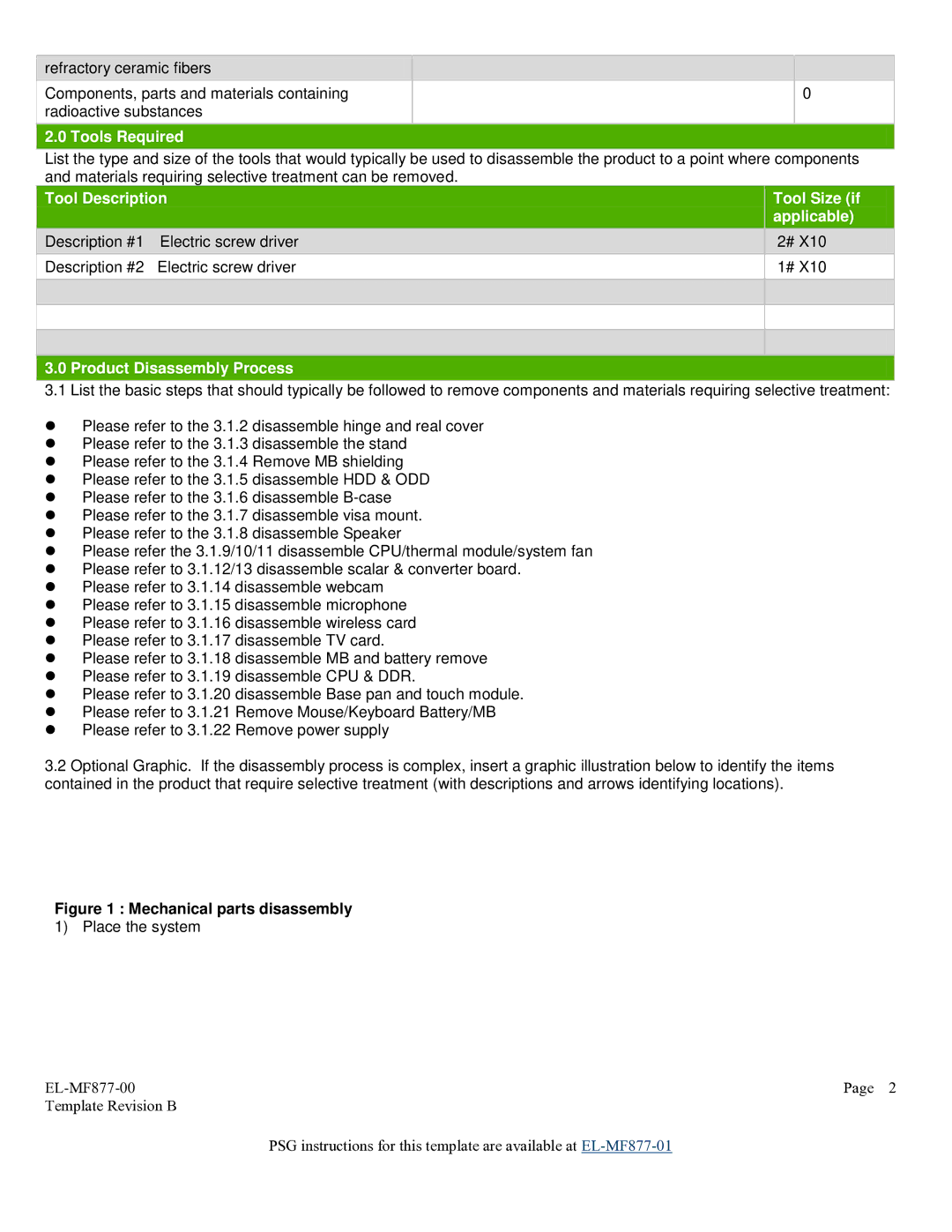
![]() refractory ceramic fibers
refractory ceramic fibers
Components, parts and materials containing radioactive substances
 2.0 Tools Required
2.0 Tools Required
0
List the type and size of the tools that would typically be used to disassemble the product to a point where components and materials requiring selective treatment can be removed.
| Tool Description |
|
| Tool Size (if |
| |
|
|
|
|
| applicable) |
|
| Description #1 | Electric screw driver |
|
| 2# X10 |
|
| Description #2 | Electric screw driver |
|
| 1# X10 | |
|
|
|
|
|
|
|
|
|
|
|
|
|
|
|
|
|
|
|
|
|
|
|
|
|
|
|
|
|
|
|
|
|
|
|
 3.0 Product Disassembly Process
3.0 Product Disassembly Process
3.1 List the basic steps that should typically be followed to remove components and materials requiring selective treatment:
Please refer to the 3.1.2 disassemble hinge and real cover
Please refer to the 3.1.3 disassemble the stand
Please refer to the 3.1.4 Remove MB shielding
Please refer to the 3.1.5 disassemble HDD & ODD
Please refer to the 3.1.6 disassemble
Please refer to the 3.1.7 disassemble visa mount.
Please refer to the 3.1.8 disassemble Speaker
Please refer the 3.1.9/10/11 disassemble CPU/thermal module/system fan
Please refer to 3.1.12/13 disassemble scalar & converter board.
Please refer to 3.1.14 disassemble webcam
Please refer to 3.1.15 disassemble microphone
Please refer to 3.1.16 disassemble wireless card
Please refer to 3.1.17 disassemble TV card.
Please refer to 3.1.18 disassemble MB and battery remove
Please refer to 3.1.19 disassemble CPU & DDR.
Please refer to 3.1.20 disassemble Base pan and touch module.
Please refer to 3.1.21 Remove Mouse/Keyboard Battery/MB
Please refer to 3.1.22 Remove power supply
3.2Optional Graphic. If the disassembly process is complex, insert a graphic illustration below to identify the items contained in the product that require selective treatment (with descriptions and arrows identifying locations).
Figure 1 : Mechanical parts disassembly
1) Place the system
Page 2 | |
Template Revision B |
|
| PSG instructions for this template are available at |
